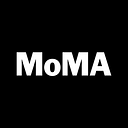Bernard Rudofsky’s 1944 exhibition “Are Clothes Modern?”
Author: Paola Antonelli
Senior Curator, MoMA
We’re over two years into intensive research for our upcoming exhibition, Items: Are Clothes Modern? and I still get asked on a fairly regular basis: How did MoMA decide to embark on a fashion exhibition? I always answer with the same (true) story. Several years ago, in an attempt to plot out necessary acquisitions for the Museum’s collection of modern and contemporary design, and believing that a history of design cannot be told without fashion, I began to keep a list of items (for my eyes only) that I called “garments that changed the world.”
In keeping with the gist of our collection, which privileges objects over designers, I added to the list items that came to mind that had made their mark on a global and/or local level: the wrap dress, the cheongsam, the keffiyeh, and the baseball cap were early contenders, and the list quickly ballooned over the years. I stuck to the chronology of most of the works we hold in our architecture and design department, so roughly 1900 to the present (with exceptions harking back to the eighteenth century). About two years ago, MoMA’s director, Glenn Lowry, suggested the list should become an exhibition. That’s how we find ourselves here, with just under a year to go before it opens.
With a fashion design exhibition finally on the roster, the first thing I did — along with putting together a great research team and a solid advisory group to buttress my eager ignorance — was to answer the second question I have been repeatedly asked on this journey: When’s the last time MoMA had a fashion exhibition? This was fairly easy to do, given that MoMA has had only one other exhibition of this nature: 1944’s Are Clothes Modern?, curated by the legendary Bernard Rudofsky. We are of course paying homage to his work with our exhibition, as underscored by its subtitle Is Fashion Modern?
Rudofsky’s book has been sitting on a throne-like (figurative) ledger in our department now for over two years. It’s an idiosyncratic, beautifully designed volume full of passionate descriptions,
images,
and, especially, infographics like this one, which takes a cross-section across the waist of a gentleman’s body in full dress and, like a slice through a tree trunk, reads his layers,
while the frontal “X-ray” detects all of his buttons and pockets.
Rudofsky’s intention was to interrogate the relationship between people and their clothing in his contemporary moment, assessing what worked across cultures and what needed to change along with the pace of modernity (who needed over 20 pockets when telecommunications and technology were on the rise, really?) While his approach predated most of the theoretical lenses — postcolonial, feminist, postmodernist, etc. — that we find imperative today, his exhibition catalogue and the images of the exhibition were incisive and have proven incredibly useful to our research. That’s why we were so thrilled when, about a year ago, MoMA’s Digital Media team (led by former director, Fiona Romeo, along with current director Shannon Darrough and assistant director Chiara Bernasconi) told us that the Museum’s exhibition archives were going to be shared online, as was announced to the public a few weeks ago. You can now find a treasure trove of Rudofsky’s work — he’s most often associated with a show he did twenty years later, in 1964, called Architecture Without Architects — online, including exhibition installation images, press releases, and more.
The last question I routinely have to answer is trickier: Why hasn’t MoMA had a fashion exhibition for so long? It’s something I’m still trying to figure out in many ways, especially after the last few years of research have proven the centrality and importance of fashion in design discourse. One reason is that New York City has two excellent and established voices in this area: our colleagues at The Metropolitan Museum of Art’s Costume Institute and the Museum at the Fashion Institute of Technology (they used to be three, until in 2008 the Brooklyn Museum transferred its holdings to the Met). Another is that fashion has often been sidelined and looked down upon as ephemeral, decorative, and downright vacuous in design and other academic realms, a perception we hope to address and recalibrate in our exhibition.
One thing is clear: it is impossible to imagine a design history without fashion. The list of garments, footwear, and accessories truly exploded once our research team (myself, curatorial assistant Michelle Millar Fisher, research assistant Stephanie Kramer, intern Anna Burckhardt, and the since-departed but much-cherished former interns Oliver Graney, Maria McClintock, and Kristina Parsons) got involved, ending up with close to 500 entries. While we’ve whittled those down to close to 104, the core question that guided the exercise proves its importance. Garments change the world every day, in ways big and small. Rudofsky knew this, and we’re excited to share the idea once again at MoMA next year.

